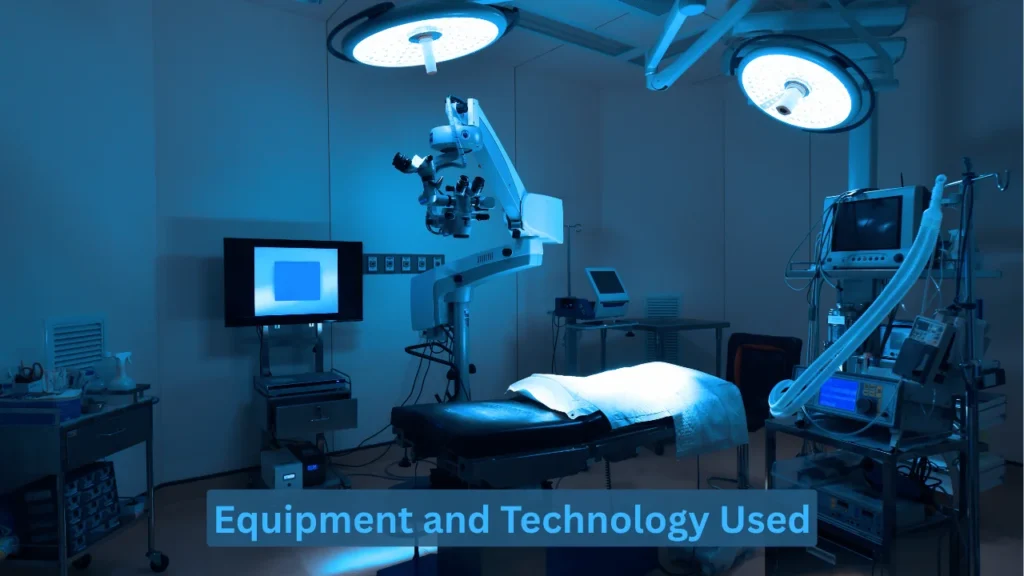MICU Full Form in Medical and Other Fields 2025
When someone is seriously ill, they may need more than regular hospital care. That’s where the MICU Full Form — Medical Intensive Care Unit — becomes essential. The micu full form in medical refers to a hospital department that provides round-the-clock treatment to patients with life-threatening medical conditions. It is not just another ward; it is the heart of critical care for non-surgical patients who need continuous monitoring, ventilators, or other life support systems.
What is MICU Full Form in Medical?
The MICU form in medical is Medical Intensive Care Unit. It is a specialized hospital department designed to provide continuous, round-the-clock care for patients suffering from severe, life-threatening medical conditions. Unlike surgical ICUs that care for patients after surgery, the MICU treats those with serious medical conditions.
Patients admitted to the MICU often require ventilator support, constant monitoring, and advanced medications to stabilize their condition. The unit is managed by a team of highly trained doctors, nurses, and respiratory therapists who work together to deliver intensive treatment and ensure patient recovery.
Why MICU Is Important in Hospitals
The micu form in medical describes more than a unit — it represents a lifeline. Patients with severe pneumonia, sepsis, heart attacks, or organ failure rely on this section for survival. The MICU helps stabilize patients before transferring them to less intensive wards when their condition improves.
Every hospital with a strong internal medicine department includes an MICU because it allows immediate access to intensive care without waiting for surgical clearance. This ensures faster treatment and better outcomes. The team members in the MICU are skilled at identifying subtle changes in patients’ health and reacting quickly to prevent crises.
Structure and Staff of the MICU
The MICU works through teamwork. Each person plays a vital role in saving lives. Here’s a simple table explaining the main staff and their responsibilities:
| Role | Main Responsibility in MICU |
|---|---|
| Intensivist or Critical Care Physician | Oversees all patient treatment plans and coordinates care. |
| Critical Care Nurses | Provide continuous bedside care, track vital signs, and administer medications. |
| Respiratory Therapist | Handles ventilators and ensures proper breathing support. |
| Pharmacist | Prepares and reviews medicines for correct dosages and combinations. |
| Dietitian and Physiotherapist | Maintain nutrition and physical strength during recovery. |
Every MICU is designed with technology that allows real-time monitoring. The environment is quiet but alert, as even a small change in a patient’s readings can require immediate attention.
Conditions Treated in the MICU
Patients are admitted to the MICU when their conditions cannot be managed in general wards. Some of the common medical problems treated here include:
- Severe respiratory failure requiring ventilator support
- Cardiac failure or heart attacks needing constant ECG monitoring
- Kidney failure that may need dialysis
- Sepsis or bloodstream infections requiring strong antibiotics
- Metabolic or electrolyte imbalances that can affect body function
- Multiple organ failure from diseases or poisoning
The MICU team uses both medicines and machines to stabilize such patients. Every treatment plan is carefully monitored, and doctors make adjustments hourly if necessary.
MICU vs Other ICUs
It is easy to get confused between the different intensive care units. However, understanding the micu form in medical helps in distinguishing it from others.
| Type of ICU | Main Focus |
|---|---|
| MICU (Medical ICU) | Treats non-surgical, internal medicine cases like sepsis, heart disease, or respiratory failure. |
| SICU (Surgical ICU) | Manages patients after surgeries and trauma cases. |
| PICU (Pediatric ICU) | Focuses on critical care for children and infants. |
| Neuro ICU | Cares for patients with brain or spinal cord injuries. |
This difference ensures that patients receive the most suitable care based on their health issue. For example, someone recovering from brain surgery goes to the Neuro ICU, but someone with pneumonia and lung failure is admitted to the MICU.
Day-to-Day Life Inside the MICU
Inside the MICU, every day is about precision and vigilance. Nurses monitor patients’ oxygen levels, heartbeats, and blood pressure continuously. Doctors conduct rounds several times daily to adjust treatment plans.
Family visits are often limited to ensure the patient stays in a clean and quiet environment. Many patients are sedated so their bodies can rest while machines take over essential functions like breathing. Staff communicate regularly with families to explain progress and expected outcomes.
Equipment and Technology Used

The micu full form in medical indicates not just care but also advanced technology and specialized medical expertise. Here are some essential tools used in most MICUs:
| Equipment | Purpose |
|---|---|
| Ventilator | Helps patients breathe when their lungs cannot. |
| Cardiac Monitor | Tracks heart rate, rhythm, and pressure. |
| Infusion Pumps | Deliver precise doses of medication or nutrition. |
| Dialysis Machine | Removes waste from blood when kidneys fail. |
| Defibrillator | Restarts or regulates the heart during cardiac arrest. |
Each machine plays a key role in saving lives, but they require trained staff to operate and interpret data accurately.
Challenges Faced by the MICU
Running an MICU successfully is demanding. Patients’ conditions can change in minutes, and every decision counts. Staff must stay calm under pressure and make quick choices about medicine doses, ventilator settings, or emergency procedures.
Emotional stress is also high because the MICU deals with critically ill patients daily. Doctors and nurses must balance professional detachment with compassion, offering hope to families while preparing them for all outcomes.
Admission and Discharge Process
Patients are usually brought to the MICU from emergency rooms or regular wards. Admission criteria depend on the severity of illness and need for continuous observation. Once admitted, the patient is connected to monitors and life-support systems immediately.
As the patient recovers, the goal is to reduce dependence on machines and medications. When stable enough, they are transferred to a step-down unit or regular ward. This transition marks improvement but still requires careful monitoring.
Importance of Communication and Family Support
Family members play a vital role in the recovery process. Doctors encourage regular updates so families stay informed and understand the treatment. Clear communication builds trust and helps families make important decisions about ongoing care.
Hospitals often have social workers and counselors who guide families through emotional challenges and financial concerns. The MICU is not just a place for medical healing but also emotional support.
What Makes MICU Different
The micu form in medical highlights its core strength: treating internal diseases that become critical. It combines advanced technology with skilled human care. Unlike other hospital departments, the MICU operates 24/7 without rest. Every second, alarms, monitors, and medical staff work together to maintain a patient’s life.
A strong MICU can improve a hospital’s overall performance because it reduces death rates and speeds up recovery for severely ill patients. It also trains medical professionals in emergency management and quick decision-making.
Training and Skills for MICU Staff
Working in the MICU requires special training. Doctors complete additional studies in critical care medicine. Nurses must understand ventilator use, infection control, and emergency protocols. Regular simulation drills help the team stay prepared for any crisis.
The MICU team also collaborates with pharmacists, dietitians, and therapists to ensure total patient care — from medication safety to nutrition and physical rehabilitation.
Relation Between MICU and Patient Outcomes
Hospitals track MICU success using various measures like mortality rate, infection rate, and average stay duration. A well-managed MICU lowers complications and improves patient outcomes. Early detection of deterioration is key, and technology plays a big part in this.
Research shows that hospitals with well-equipped MICUs have better survival rates for conditions like sepsis and acute respiratory distress syndrome (ARDS). This makes the unit one of the cornerstones of modern healthcare.
Role of Other Units Like CEC
In the middle of this discussion, it’s also worth noting the CEC Full Form, which in medical studies often refers to the Clinical Events Committee. This committee ensures that outcomes in clinical research are evaluated fairly and consistently. Both MICU and CEC highlight how detailed and structured modern medicine has become — every process and department has a clear role and name.
Conclusion
The micu full form in medical — Medical Intensive Care Unit — represents one of the most advanced areas in healthcare. It’s where life-saving technology meets skilled hands and compassionate hearts. Patients with severe medical illnesses find hope here, surrounded by experts trained to act within seconds.
From ventilators to monitoring systems, from nurses’ care to physicians’ precision, the MICU defines what critical care truly means. Understanding this term helps students, patients, and families appreciate the dedication and science that keep lives safe when every heartbeat counts.
In short, the micu form in medical is more than just an abbreviation — it is a symbol of survival, strength, and the highest level of medical attention humanity can offer.






